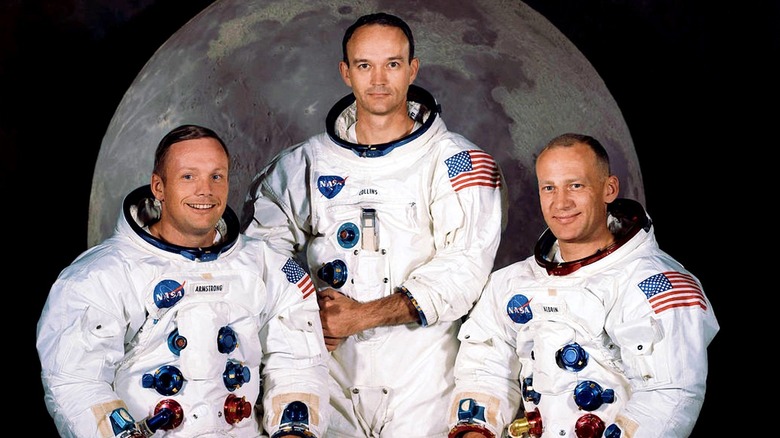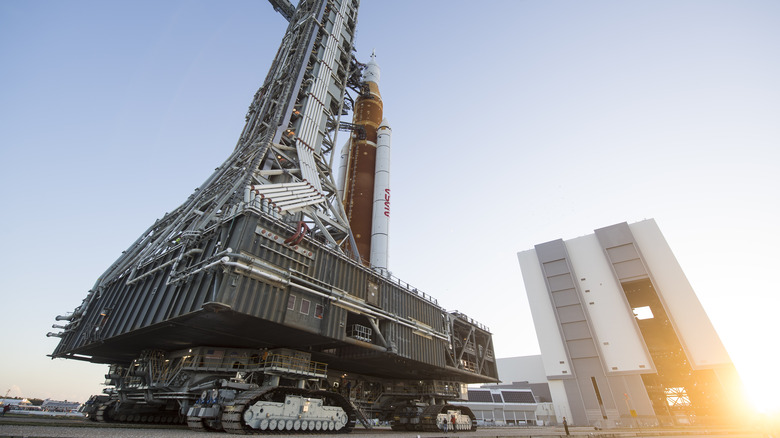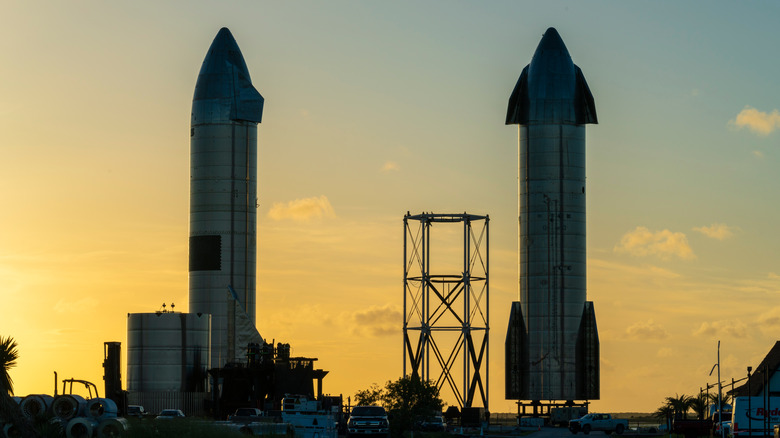Why There Haven't Been More Trips To The Moon, According To Astronauts
The year 2022 marked the 50th anniversary of the Apollo 17 mission and the last time humans landed on the moon. When NASA formally launched its Artemis program in 2017, not only to take astronauts back to the moon but also to build a lunar south pole base and establish a permanent presence, it raised an inevitable question: what took so long?
NASA kept busy after its Apollo days with space exploration missions like Voyager 1 and 2, both launched in 1977 to survey the Jupiter and Saturn systems, as well as the Viking 1 and 2 missions to Mars, and the Pioneer missions that traveled to Venus. These efforts all had elements in common: they were relatively small, low cost, and offered a high scientific return on investment. The first space race against Russia was over and NASA was working within a budget, maximizing results for every dollar spent.
During the '80s, a new space race aimed to dominate low-Earth orbit and conquer the space where the world's satellites operate. NASA explains that it had been given the green light by the Nixon administration to develop the Space Shuttle program, and in 1981 the Shuttle was ready for its first launch. The culmination of this space race ended with a truce in the form of the International Space Station, a beacon of international cooperation with the main two competitors, Russia and the U.S., working side by side.
Space exploration in the '80s, '90s, and 2000s, just like in the '50s, '60s, and '70s, was shaped by international political events happening on Earth.
What astronauts have to say about the delay
In 2019, Insider reported that astronauts believed budget and politics were the main barriers that kept humanity away from returning to the moon. "If it wasn't for the political risk, we would be on the moon right now," former NASA Administrator Jim Bridenstine told Insider. "In fact, we would probably be on Mars," Bridenstine added.
NASA legend and astronaut Buzz Aldrin testified before the Senate Subcommittee on Space, Science, and Competitiveness on February 24, 2015, reading from a written statement that warned that returning to the moon would only be possible with the support of Congress and the administration. "American leadership is inspiring the world by consistently doing what no other nation is capable of doing. We demonstrated that for a brief time 45 years ago. I do not believe we have done it since. I believe it begins with a bi-partisan Congressional and Administration commitment to sustained leadership," (via Senate.gov).
Business Insider also interviewed Apollo astronauts Rusty Schweickart and Harrison Schmitt in 2019 during an event to celebrate the 50th anniversary of the Apollo 11 moon landing. Speaking about the Artemis program, Schweickart said, "Accelerating something that ambitious is a real challenge, and it takes commitment and dollars. We've tried two other times — administrations have tried — and they've been stillborn." Astronaut Schmitt added that in order for a moon program to succeed, it needs to recreate the Apollo work environment that was filled with young, energetic, and ambitious people.
During his own testimony to Congress in 2015, astronaut Walter Cunningham said, "Manned exploration is the most expensive space venture and, consequently, the most difficult for which to obtain political support." Cunningham reminded Congress that NASA's budget during the Apollo days peaked at 4% of the federal budget but remained below 1% percent for the past 40 years. "Any project as complex as Apollo requires three things: resources, technology, and — most important — the will to do it," Cunningham added.
Artemis is a whole new approach to funding space travel
With the question of how expensive space exploration will be paid for still looming, and reluctance in the US government for taxpayers to foot the whole bill of developing a whole new space program, NASA took a different strategy. The Space Technology Mission Directorate (STMD) aims to use public-private partnerships to make the cost of returning to space more affordable. Instead of developing everything in-house, NASA works with the commercial space sector to help fund the development of commercial space capabilities that could also benefit future NASA missions.
That approach will be instrumental for Artemis, and America's return to the moon. Though NASA is responsible for the program, it's working with companies like SpaceX, Boeing, Lockheed Martin, Northrop Grumman, and others on different elements of the hardware involved. SpaceX, for example, will be providing the Starship that NASA astronauts will use as their moon lander in 2024; they'll travel to the Lunar Gateway in an Orion spacecraft atop an SLS rocket, on which the US space agency collaborated with Aerojet Rocketdyne, Northrop Grumman, Boeing, and the United Launch Alliance.
Artemis still won't be cheap, even with NASA's reliance on private partnerships. Earlier this year, NASA Inspector General Paul Martin admitted to the House Subcommittee on Space and Aeronautics that each of the first four Artemis launches were on track to cost $4.1 billion apiece, CNBC reported, as the multi-year project spiraled over budget. In a NASA audit released in late 2021, the space agency projected it would spend $93 billion on the project through 2025.


